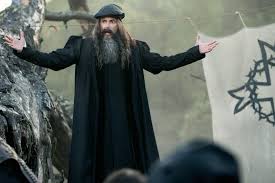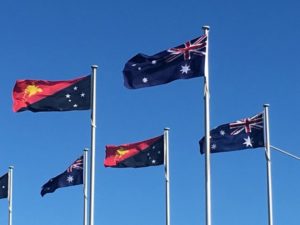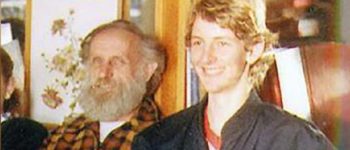1994: “They’re dead, they’re all dead.”
June 19, 2020
By AHNZ
 Today in history, 20 June, 1994, a broken family named Bain was murdered all in one go. This occurred at Dunedin’s suburban Anderson Bay. The killer is narrowed down to either the father, Robin Bain, or David Bain, the eldest son and only survivor (image left.)
Today in history, 20 June, 1994, a broken family named Bain was murdered all in one go. This occurred at Dunedin’s suburban Anderson Bay. The killer is narrowed down to either the father, Robin Bain, or David Bain, the eldest son and only survivor (image left.)
Which man did it? Robin, the 55 year old Silent Generation man or David, the 22 year old Generation Xer? This question has dragged on ever since, making it the most expensive trial in New Zealand history¹. David Bain was initially found guilty but then, after 13 years in prison, found not to be so after all. (Without The State who would provide the Justice System?) Bain has received no compensation for his stolen life but National 5.0 did offer him just under a million dollars to hush up and never talk about the case again. I assume he accepted.
“..a 111 call was made at 7.09am on June 20, 1994. A distressed David, then 22, told the operator, “They’re dead, they’re all dead.””- NZ Womans’ Weekly
Anarchist History of New Zealand has no opinion on who the guilty party was. It would be easy to compare Robin Bain to his Silent Generation contemporary, Brian Schlaepfer, who massacred his own family in 1992. However, the Bain family history is even more exotic…
Religious Crisis in New Zealand
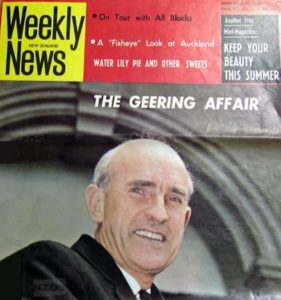 Presbyterianism had been crumbling on public show ever since Professor Lloyd Geering, heretic and principal of the Presbertarian theological intelligentsia school himself, began announcing that Jesus was never resurrected after all. Uncontested, Geering tore through the core belief system of the The Free Church of Scotland culture that had colonised the south of the South Island (esp. Dunedin.)
Presbyterianism had been crumbling on public show ever since Professor Lloyd Geering, heretic and principal of the Presbertarian theological intelligentsia school himself, began announcing that Jesus was never resurrected after all. Uncontested, Geering tore through the core belief system of the The Free Church of Scotland culture that had colonised the south of the South Island (esp. Dunedin.)
Mr and Mrs Robin Bain were members of the Presbertarian Church that Geering had nuked on from a great height.
Rather than stay and face the deconstruction of Otago culture, the couple took their crumbling religion away on a boat to barbarian lands: Papua New Guinea
Papua New Guinea
I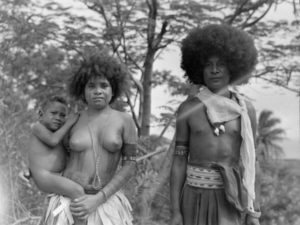 n 1973, Mr and Mrs Robin Bain took their young son, David, away on a Christian Mission to PNG. Like all Missionaries, they held the conviction that they had the Good News that God and the Savage would be grateful for their spreading around. Bain had been on a PNG mission before and his life and work derived its purpose from the objectives and funding of his church. Three more children later, the Bains returned to New Zealand after 15 years away.
n 1973, Mr and Mrs Robin Bain took their young son, David, away on a Christian Mission to PNG. Like all Missionaries, they held the conviction that they had the Good News that God and the Savage would be grateful for their spreading around. Bain had been on a PNG mission before and his life and work derived its purpose from the objectives and funding of his church. Three more children later, the Bains returned to New Zealand after 15 years away.
The Papua New Guinea of 1973 was a place of high hopes, a place for Victimhood Culture White Folks to feel superior and important as the bringers of God and wisdom. Any doubts about God or Geering or one’s own self-esteem could be anaesthetised by the drug of being on a Mission.
“In 1973, Robin and Margaret returned to PNG as mission teachers at Gaulim Teachers’ College, run by the United Church; the family later moved to Port Moresby. David was one and a half when they left, 16 when they returned to Dunedin late in 1988. Arawa, Laniet and Stephen were all born in PNG….”They were a happy, close-knit family, bonded by deep religious beliefs….” Yet, when she visited the Bains in Every St in 1991, she found a very different story. Robin was living in the caravan at the back of the section, coming in every morning to pray. She heard arguments. Margaret called Robin the Lion, or the devil. Neasmith concluded that this was a dysfunctional family.”- Meltdown: Death of a family; Noted
Papua New Guinea had been scooped up by Australia during World War One, the same way that New Zealand made off with Samoa; Previous administrators, the Germans, putting up little resistance. The 1970s were an exciting and progressive time the Australia/PNG world, one big happy family. A popular encyclopaedia set of the era actually covered Australia, New Zealand, and Papua New Guinea all as one unit: A Pacific Empire.
In 1975 PNG gained constitutional independence from Australia, sovereignty all its own, a realm within the Commonwealth. Later that same year it joined the United Nations under its own flag. The Bains must have felt like princes and princesses of a brave and exciting new world.
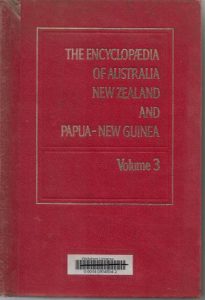 However, despite the publicity, PNG still had a heart of darkness. To this day, when it has a population of 8,000,000 there are people living in these lands never contacted by the modern world. Even now, it is one of the least explored populated places on Earth because you’re liable to get killed trying. It’s the Third World. Hell, it’s the Fourth World, as we shall see. PNG is super-diverse, with some 851 known languages over rough, rural, mountainous terrain.
However, despite the publicity, PNG still had a heart of darkness. To this day, when it has a population of 8,000,000 there are people living in these lands never contacted by the modern world. Even now, it is one of the least explored populated places on Earth because you’re liable to get killed trying. It’s the Third World. Hell, it’s the Fourth World, as we shall see. PNG is super-diverse, with some 851 known languages over rough, rural, mountainous terrain.
Missionaries only started trying to tame this savage land from 1874 which is very late. Presbyterians, like the Bains, were still pinned down mostly to the capital city of Port Moresby 100 years later. Even then, the Bain’s church had to throw in their lot with the other churches to summon enough Christian strength (United Church est. 1968²) for the Mission.
Just the same, in the first decade of the 1970s the future must have seemed very bright for the Bains living at the frontier of the civilised world. Flags, Jesus, encylopedia sets, UN seats….that was before the Bougainville revolt and Bougainville Civil War (1988-1998) during which the Bains threw in the towel to return to New Zealand.
 Nor was being a Missionary in a savage land any picnic. When someone leaves their own culture behind all the superstructure they take for granted is up to themselves to maintain. The institutions, manners, core beliefs, social fictions that we can depend upon and even mistake for ourselves simply don’t exist on a Mission. The experience of the Bain family must be quite a lot like that of Thomas Kendall’s family in the 1820s on their Mission to the Bay of Islands. Without the incredible, wilful, muscular, sense of self of a Henry Williams or a George Selwyn you’re likely to go native.
Nor was being a Missionary in a savage land any picnic. When someone leaves their own culture behind all the superstructure they take for granted is up to themselves to maintain. The institutions, manners, core beliefs, social fictions that we can depend upon and even mistake for ourselves simply don’t exist on a Mission. The experience of the Bain family must be quite a lot like that of Thomas Kendall’s family in the 1820s on their Mission to the Bay of Islands. Without the incredible, wilful, muscular, sense of self of a Henry Williams or a George Selwyn you’re likely to go native.
Contrary to the youthful ideals of Bain and Kendall, the native they sought to convert had a very powerful sense of self. They knew who they were and it was their society and their home territory, their historical inertia that the Missionary Man sought to stand within the tide of and try to direct its course. Who is more likely to be seduced or converted by whom?
Bain, to my understanding, couldn’t even find a place to stand in New Zealand against the fairly comprehensible and gentle reforming challenge from Geering. Nor could his elders. Why suppose (apart from arrogance) that he and his family could take on the most ancient unreformed and most diverse primordial population on the planet?
“Unity in diversity”- national motto of PNG
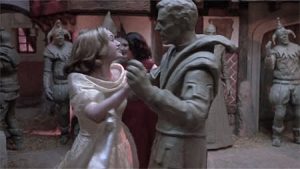 The Bain family lived in a fantasy world, paid for by church collection plates back home. While it lasted, Robin Bain could exist in the imaginary life that his Family System depended upon. Bain’s contemporary Silent Generation cohorts, Pauline Parker and Juliet Hulme, had an imaginary land they called Fourth World; Bain had Presbyterian Port Moresby. When someone tried to take away Fourth World from Parker and Hulme the result was homicide. For the Bains it would be the same.
The Bain family lived in a fantasy world, paid for by church collection plates back home. While it lasted, Robin Bain could exist in the imaginary life that his Family System depended upon. Bain’s contemporary Silent Generation cohorts, Pauline Parker and Juliet Hulme, had an imaginary land they called Fourth World; Bain had Presbyterian Port Moresby. When someone tried to take away Fourth World from Parker and Hulme the result was homicide. For the Bains it would be the same.
Take that Missionary drug away from the Bain family after 15 years, stir in some Culture Shock from living in a place that wasn’t PNG any more, and wasn’t even New Zealand of 1973 any more, and it was a family primed to explode.
Now add in the deferred maintenance of a Presbertarian Church that had been going under while the Bains looked away. Now they had to face the truth, 15 years accumulated, all in one cruel blow. It can be no accident that, like the church they thought the had served, the Bain family home was falling apart both spiritually and physically….
“…the old house was so rotten that you could see through the walls in places,…The rest of the house smelt; the kitchen stank. Dirty dishes lay in the sink, unwashed pots sat on the coal range. Shelves of preserves were so old that some of their contents had disintegrated. A bathroom at the back was just as rank. Maggots crawled on the handbasin pedestal….”- ibid
“It was an old, semi-derelict, wooden house, which was deliberately burned down shortly after the deaths. Internally, as is clear from the evidence at the trial and contemporary photographs, most of the rooms were dirty, squalid and very disorderly. They, and the caravan, contained large quantities of the family’s belongings in disordered heaps.”- Privy Council Appeal No 9 of 2006; Scoop
Their homecoming in 1991 was a crisis. A time bomb.
Tick, Tick, Boom
On 20 June, 1994, the broken Bain family was murdered all in one go. Since trying to re-integrate back into New Zealand society for the previous 2-3 years the results were in: Failure. Mother had lost her religion, gone slightly mad: Superstitious. Father was underemployed, sleeping rough, rejected by his wife. The kids of the broken family now had to live in a country they’d never known; Culture shocked. The fantasy of being equatorial heavenly creatures at the forefront of a new star in the Pacific Empire they’d been sold turned out to be rubbish. Now they were black sheep, poor, living in a rotting house in a frozen concrete sub-Antarctic fossil city of Presbyterianism.
“The fantasy of being equatorial heavenly creatures at the forefront of a new star in the Pacific Empire they’d been sold turned out to be rubbish.”
Robin Bain, as head of the family, was responsible for this. He had navigated his family into life’s rocks. It must have been unbearable, the temptation for a Schlaepfer Family Reset very great. Whoever rampaged with the gun on that horrible day, most of the responsibility for his family’s fate must always be at his feet.
 You could say, as Mrs Bain did (“Margaret was resentful that Robin, who had spent much of his life on church business abroad, should now be out of work…”Margaret said the church owed him something.””) that the broken Church should have been there for this broken family. Give them some induction back into mainstream New Zealand society, some Presbyterian Support for re-integrating. Maybe they did? Maybe it was rejected? Maybe it was the Presbyterians who pulled the plug on the Bain’s Fourth World in the first place?
You could say, as Mrs Bain did (“Margaret was resentful that Robin, who had spent much of his life on church business abroad, should now be out of work…”Margaret said the church owed him something.””) that the broken Church should have been there for this broken family. Give them some induction back into mainstream New Zealand society, some Presbyterian Support for re-integrating. Maybe they did? Maybe it was rejected? Maybe it was the Presbyterians who pulled the plug on the Bain’s Fourth World in the first place?
The moral of the story for Anarchists is to not take our faulty world too much for granted. Cultures are not museum pieces, they are the working machinery of everyday life³. To leave yours behind in place and in time is to take personal responsibility for replacing it with sound philosophy and values. And, it’s one thing to make that choice for yourself but to do it for 4 children is to take their lives in your hands.
—
1 Ref. Wikipedia
2. Australia, reeling from its own versions of Geering, conglomerated its tattered churches into a supergroup called the Uniting Church too, in 1977. New Zealand, as usual, held back from such federalising
3 Thomas Sowell
Image ref. Papua New Guinea locals at Port Moresby; Whites Aviation Ltd (1948); Alexander Turnbull Library
Image ref. Flying the PNG flag in Canberra; devpolicy.org
Note: There is a quote somewhere about the sons of Missionaries being a bit crook in the head. It was about the earliest Bay of Islands Missionaries. One day I’ll add it to the post above, when I find it.
 Like Comment Share
Like Comment Share

